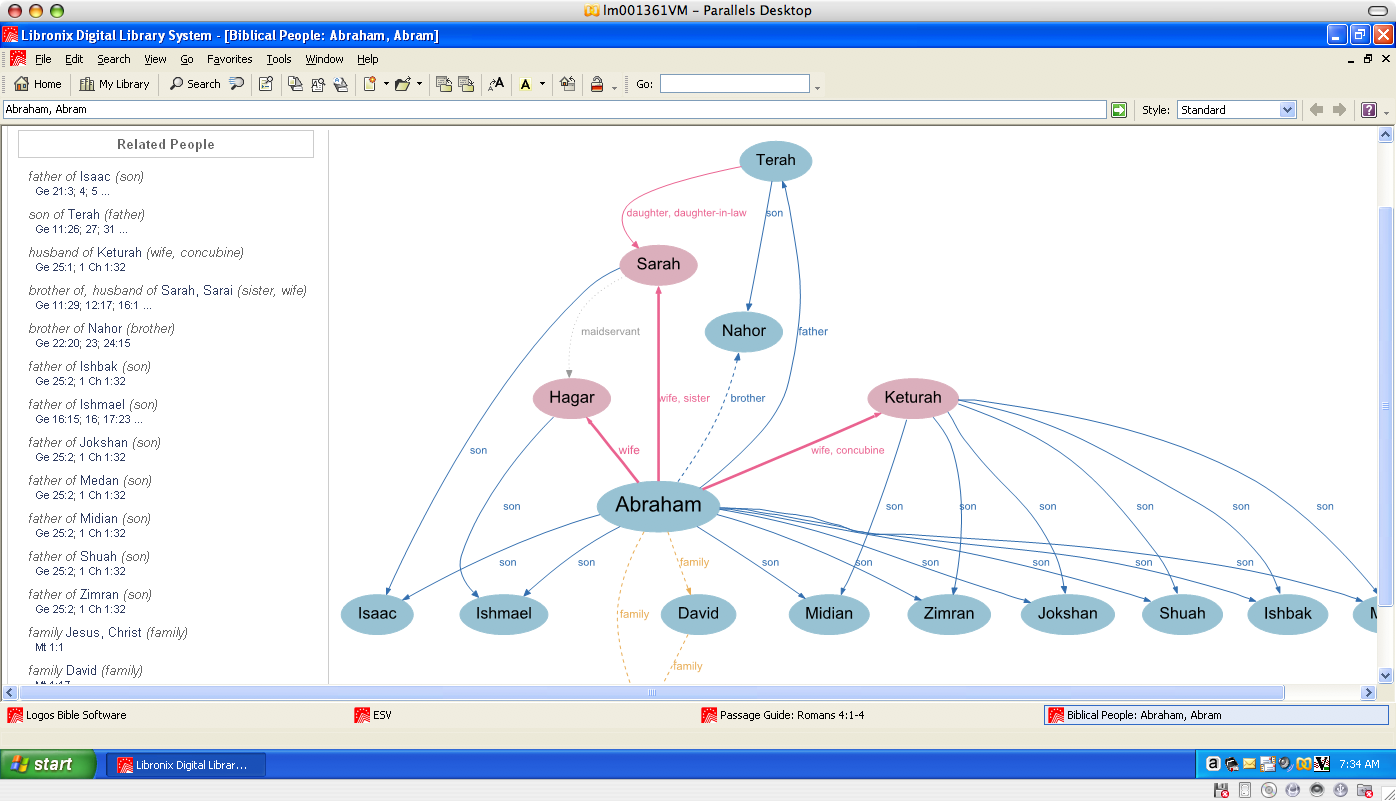Loading New Books Into Logos 4 For Mac


Download the Logos.dmg file to install Logos Bible Software from here. Open the downloaded Logos.dmg file from the Downloads folder (or wherever you saved the file). Drag and drop the Logos application file to the Applications folder. Open Logos from the Applications folder. Sign in with your Logos.com email and password. $4.99/month after free trial. One subscription per Family Sharing group. Offer good for 3 months after eligible device activation. Plan automatically renews until cancelled. Restrictions and other terms apply. New subscribers only. $9.99/month after free trial. Plan automatically renews after trial until cancelled. Logos 8 is the latest version of Logos Bible Software succeeding all previous versions of Logos Library System, Libronix Digital Library System, and previous versions of Logos Bible Software. Update your version of Logos to the latest version of Logos 8 for free. Click here if you have Logos Library System (LLS). Looking to Install the Logos 9 Software? Install Dig Deeper with the Best Bible Software on Your Desktop. Logos Bible Software puts the world’s finest Bible study tools on your PC. Its massive libraries, smart searches, and powerful original language features give you the best Bible study experience on the planet.
Oct 16, 2020 • Filed to: Solve Mac Problems • Proven solutions
Recovery Mode in OS X provides a set of solutions for users to utilize when users need to repair and reinstall their operating system in an emergency. You can also reset the Mac password using recovery mode if needed. There are several ways to boot Mac into recovery mode. If you find one method overwhelming, there are several other alternatives you can use. We will walk you through the different ways on how to boot Mac into recovery mode so that they will become undoubtedly useful in a rare emergency.
Part 1: How to Boot Mac in Internet Recovery Mode
Along with the introduction of a locally stored recovery volume, Apple introduced its Internet Recovery service that allows your operating system to download contents of the recovery hard disk partition from the company's service. This option is great to use when your local drive is completely corrupted and you no longer can access locally-stored recovery tools.
To launch Internet Recovery, make sure your Mac is connected to a WiFi network and follow the steps below:
- Reboot your Mac.
- Hold the 'Options', 'Command', and 'R' buttons until the boot chimes are triggered.
- Wait until the system finished downloading the recovery tools from Apple's website.
It is noted that you are unable to boot Mac into Recovery Mode if you are using devices older than the ones below:
- MacBook Pro (13-inch, Early 2011)
- MacBook Pro (15-inch, Early 2011)
- MacBook Pro (17-inch, Early 2011)
- iMac (21.5-inch, Mid 2011)
- iMac (27-inch, Mid 2011)
- MacBook (13-inch, Mid 2010)
- MacBook Pro (13-inch, Mid 2010)
- Mac mini (Mid 2010)
- MacBook Pro (15-inch and 17-inch, Mid 2010)
- iMac (21.5-inch and 27-inch, Mid 2010)
- MacBook Air (11-inch and 13-inch, Late 2010)
Part 2: How to Create a bootable drive into Recovery Mode
You can create a bootable drive to store an OS X Recovery Disk so that you can access recovery tools anytime, anywhere. It would be great if you could invest in a high-capacity USB 3.0 flash drive to store the required tools.
There are plenty of articles outlining how you can create a bootable OS X Recovery Disk, including ours. Once you have this established, you can follow these steps to get your Mac into Recovery Mode:
- Reboot your Mac.
- Hold down 'Option' on your keyboard once you hear the chime sound.
- Attach your bootable OS X Recovery Disk to your Mac and select it from the prompt list.
- Your Mac will launch into Recovery Mode and you can start fixing your Mac.
As you can see, there are plenty of methods you can use to boot Mac into Recovery Mode. There is no need to panic when you find yourself in trouble - just choose and master the method that seems least intimidating to you and you will be well on your way. After you boot Mac into Recovery Mode, you can also restore your data on Mac.
Nov 19, 2018 10 Best SimCity 4 Mods That Make Everything More Awesome 1) The SimPeg Agricultural Mod (SPAM) 2) Simfox Night N 3)Make Your Own Parks 4)Civilian Cars 5)Realism Mod 6) BSC Funding Tool 7) Radius Doubler 8) Larger Essentials 9) Garbage Chute 10) NAM. Simcity 4 network addon mod. CoriBoom MySimtropolis: Members Immortalized in SC4. By Cyclone Boom. CoriBoom™ Productions Proudly Presents. Colossus Addon Mod. SC4Fix: Third-party patches for SC4. Network Addon Mod (NAM) - Cross-Platform. The Network Addon Mod, or NAM, is a modification for SimCity 4 Deluxe, which adds a myriad of new transport network items, ranging from ground light rail, to fractional-angle roads, to roundabouts, and much more. SimMars (Beta 3) - Terraform 1000.
Loading New Books Into Logos 4 For Mac Free
Part 3: How to Boot Mac with Installation Disk
2006 harley davidson ultra classic specs. If you are using an older Mac, it probably comes with a grey recovery DVD that you can use to run recovery routines. If you had bought a copy of a newer operating system, you can also use the installation disk to perform recovery.
It is the easiest way to go into Recovery Mode and here is how you can do it:
- Insert the grey DVD and reboot your Mac.
- Hold down 'C' on your keyboard until you hear the boot chimes.

Loading New Books Into Logos 4 For Mac 2017
The recovery tool will take some time to load. Follow the wizard that will put your Mac into Recovery Mode.
Part 4: How to Boot Mac into Recovery Mode with Local Recovery
- Reboot your Mac.
- Hold the 'Command' and 'R' buttons until the boot chimes are triggered.
- You will see the OS X utility window that will prompt you to choose one of the four options.
Part 5: How to Boot Mac into Recovery Mode from Time Machine
It is really important to keep backups of your machine and Apple facilitates this with its Time Machine feature. It would be best to store your backup on an external drive so that you can initiate Recovery Mode using this when your hard drive is wiped out.
Follow these steps to boot Mac into Recovery Mode:
- Reboot your Mac.
- Hold down the Option button when the startup chimes sound.
- Connect your Time Machine drive. It will take some time for the system to detect the drive. You might need to key in your password.
- Choose the drive to launch your Mac into Recovery Mode.
After all the above methods, you finally fail to boot your Mac into Recovery mode. Don't worry. We also provide further solutions for you - Fix 'Cannot boot into Recovery mode'. For those who need the data recovery solution, Recoverit would be a nice option. Free download and try it now.
Look for 'Language and install options'. Here's where to look for it:. Log in to your Office 'My Account' page. Microsoft.office.for.mac.standard.2016newiso. For Office 365 subscribersIf you have a current subscription to Office 365, you'll need to get the Office 2016 preview through your account management page. Click it.

Video Tutorial on How to Boot Mac into Recovery Mode
What's Wrong with Mac

- Recover Your Mac
- Fix Your Mac
- Delete Your Mac
- Learn Mac Hacks
